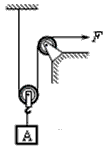问题
单项选择题
下列四个商业银行中,违反《商业银行法》关于资产负债比例管理规定的是( )。
A.甲商业银行的资本充足率为10%
B.乙商业银行的贷款余额与存款余额的比例为70%
C.丙商业银行流动性资产余额与流动性负债余额的比例为20%
D.丁商业银行对王某的贷款余额与本行的资本余额的比例是9%
答案
参考答案:C
解析:本题涉及商业银行资产负债比例管理的规定。参见《商业银行法》第39条,商业银行贷款,应当遵守下列资产负债比例管理的规定:(一)资本充足率不得低于百分之八;(二)贷款余额与存款余额的比例不得超过百分之七十五;(三)流动性资产余额与流动性负债余额的比例不得低于百分之二十五;(四)对同一借款人的贷款余额与商业银行资本余额的比例不得超过百分之十。

